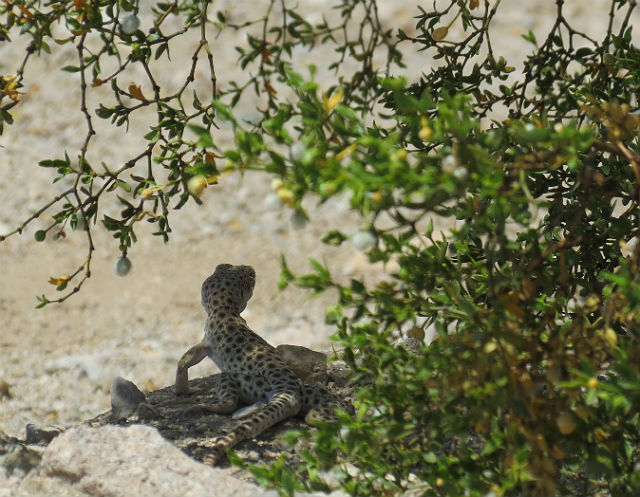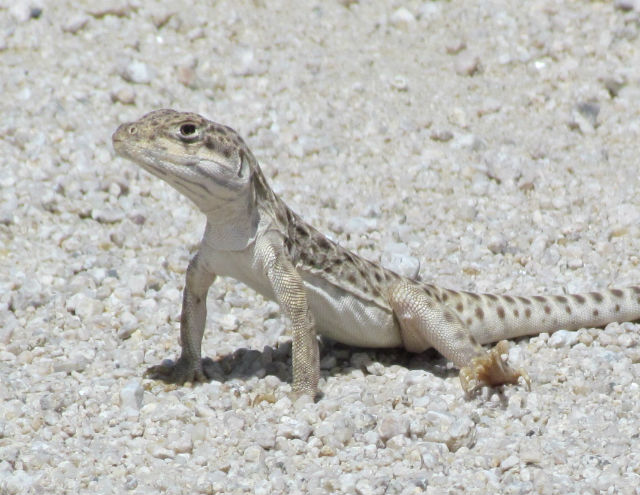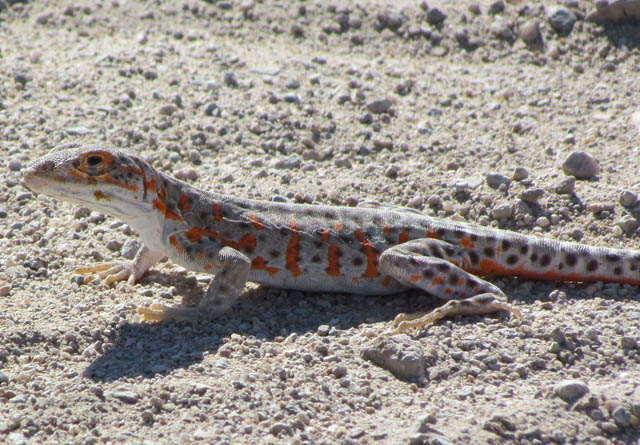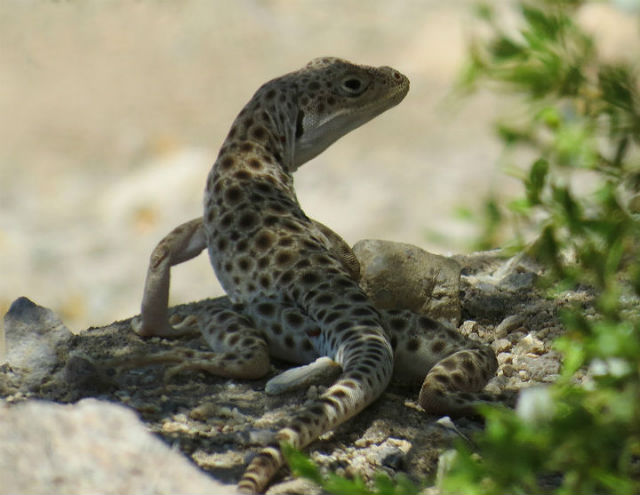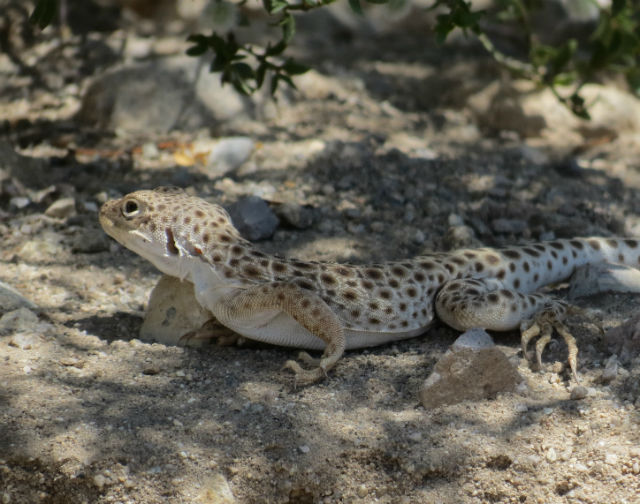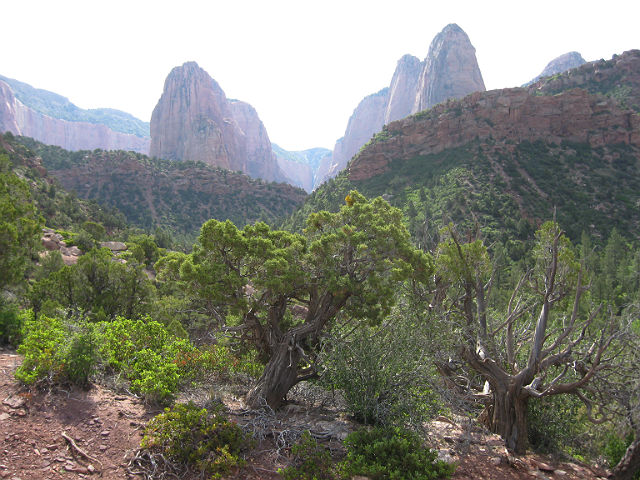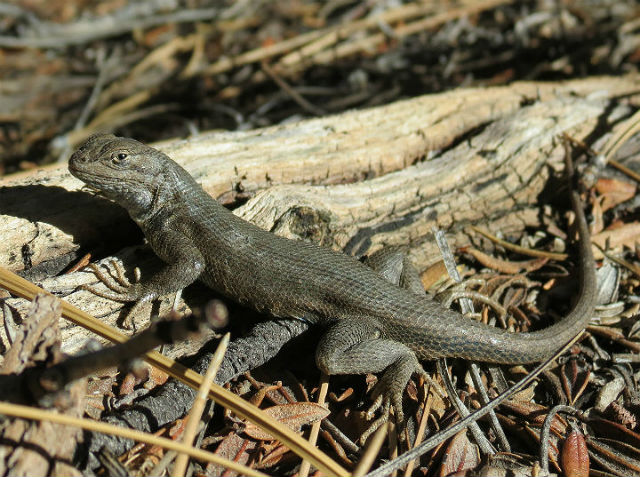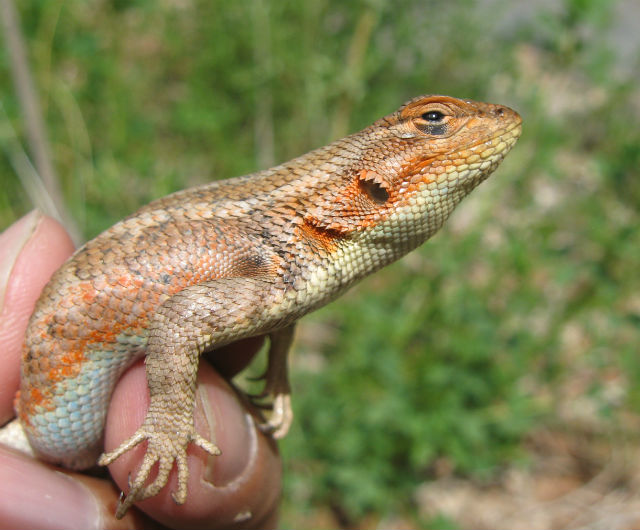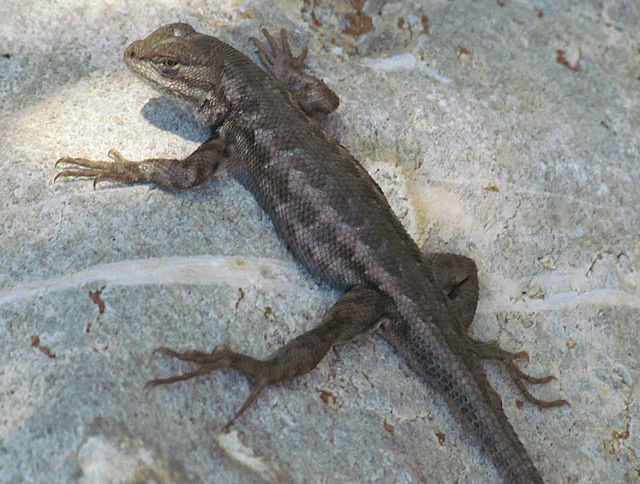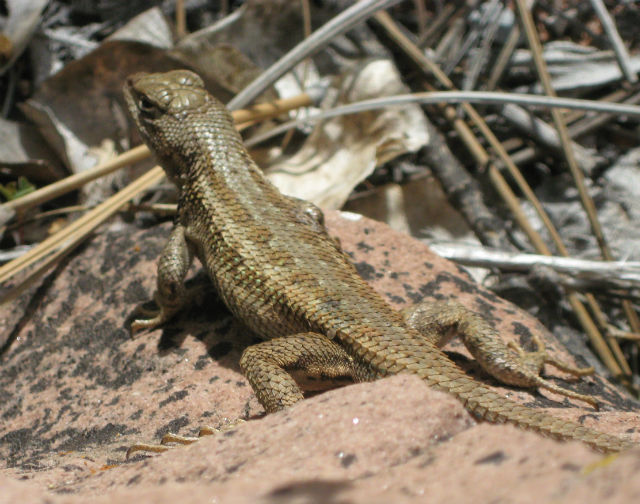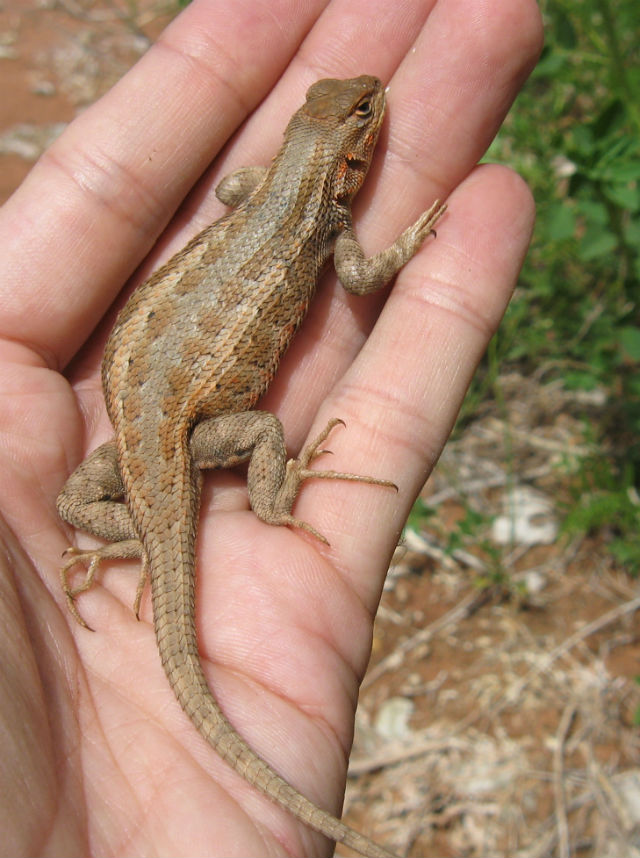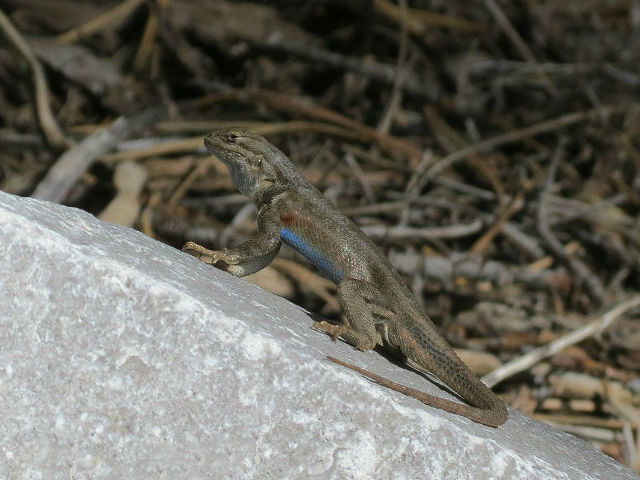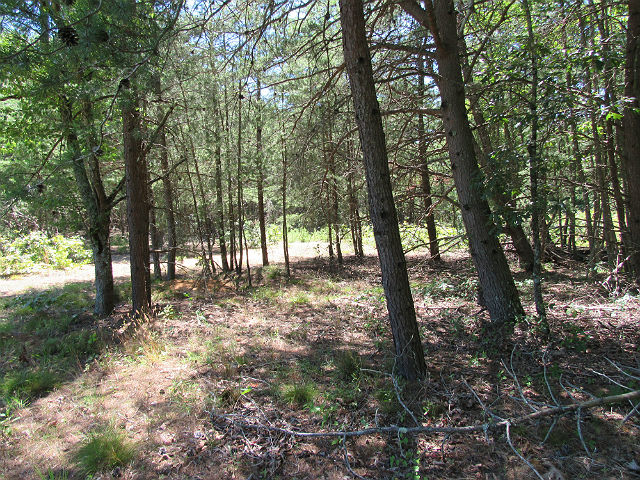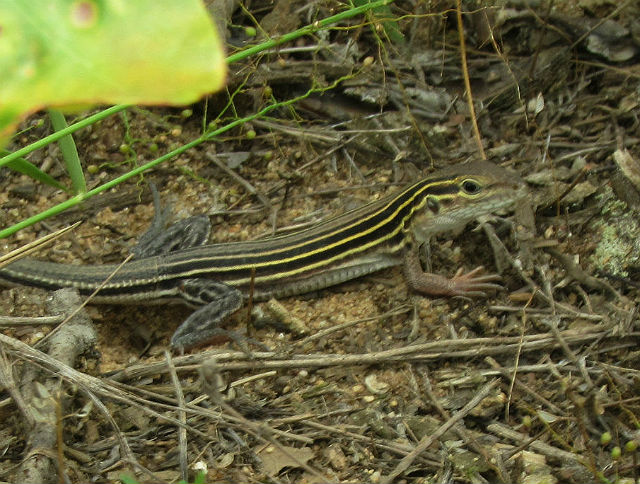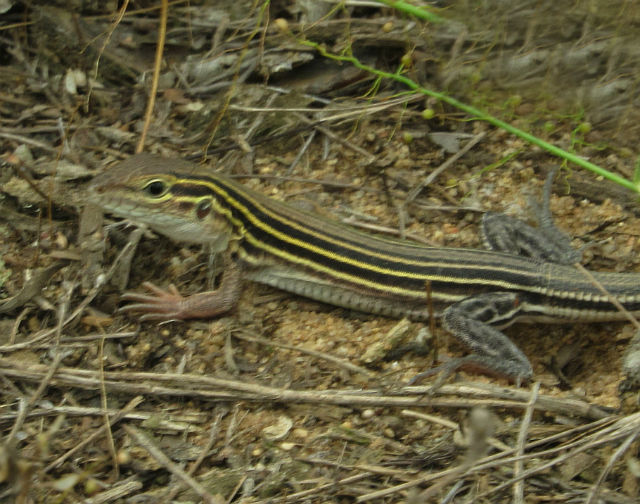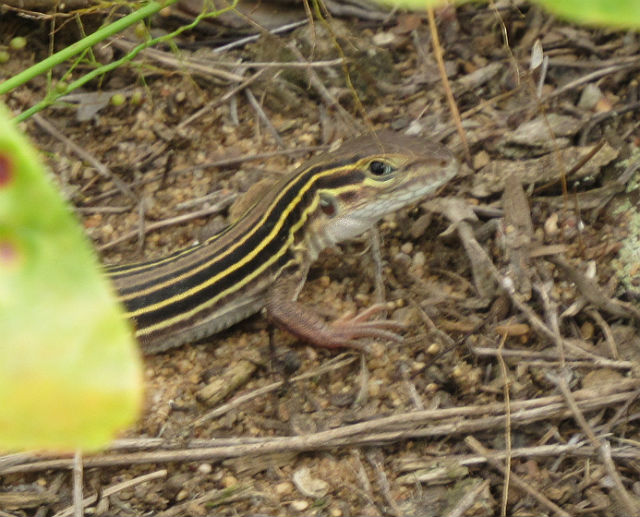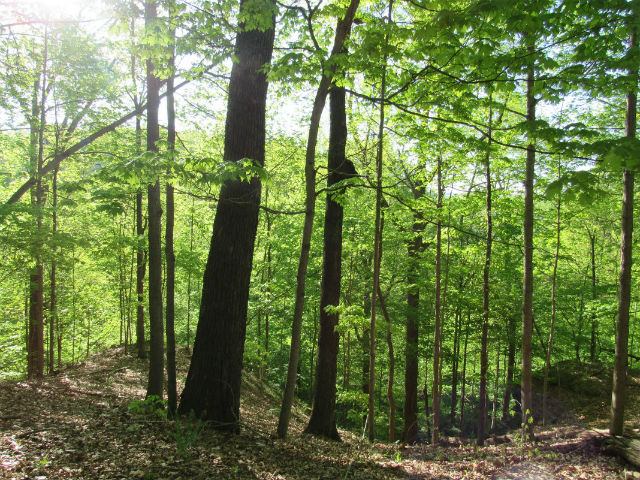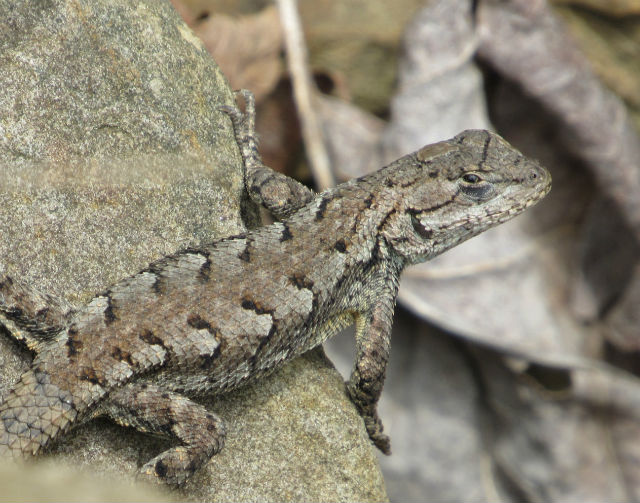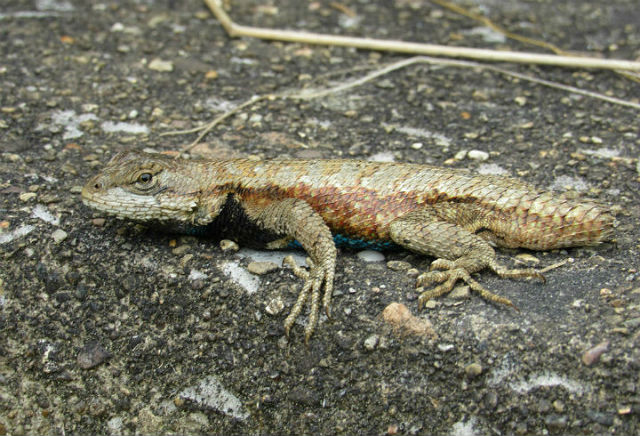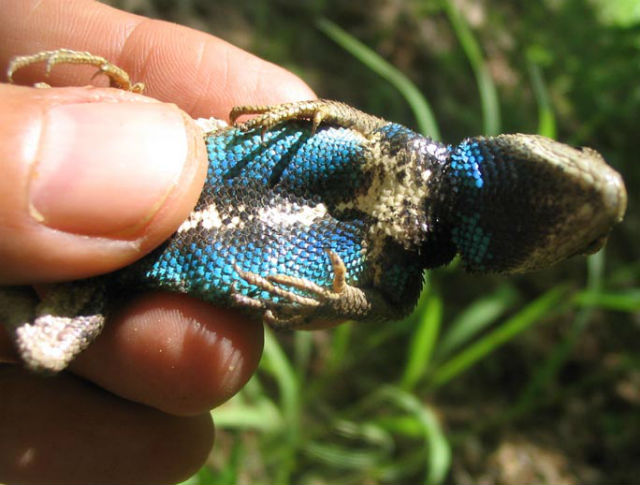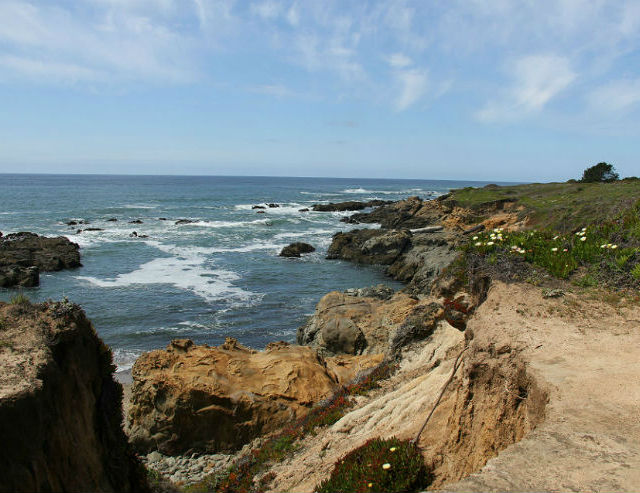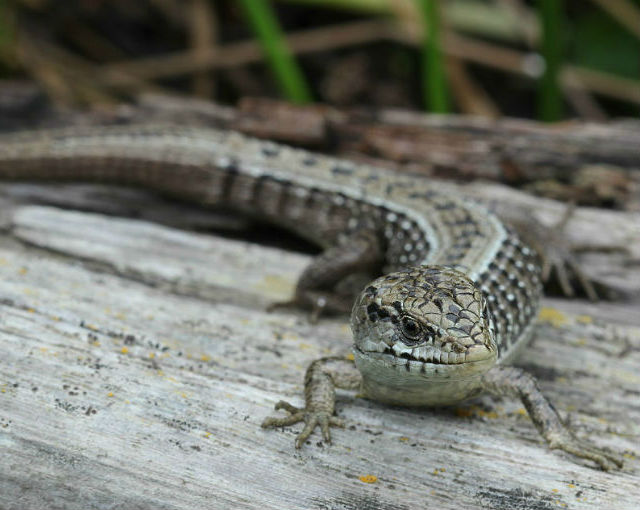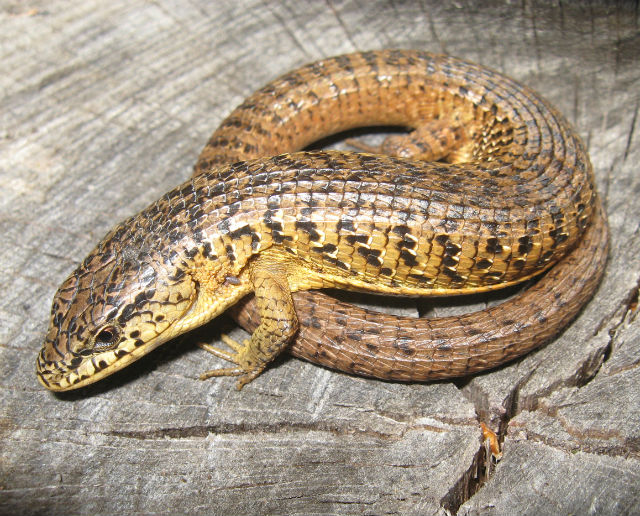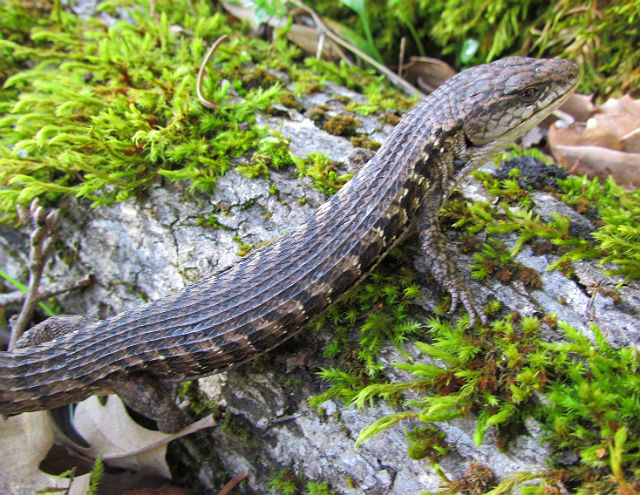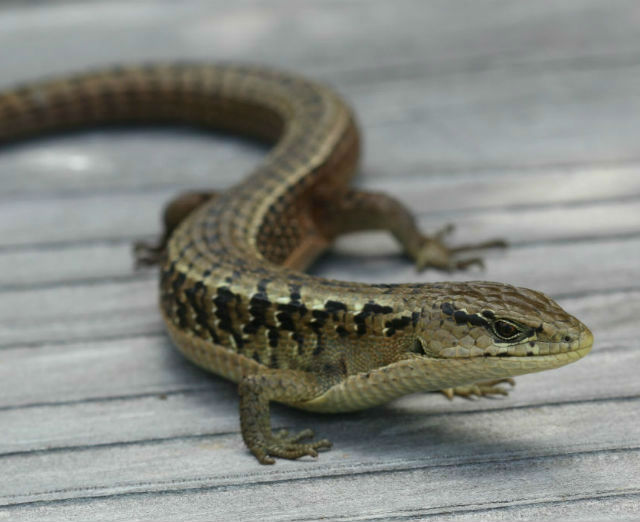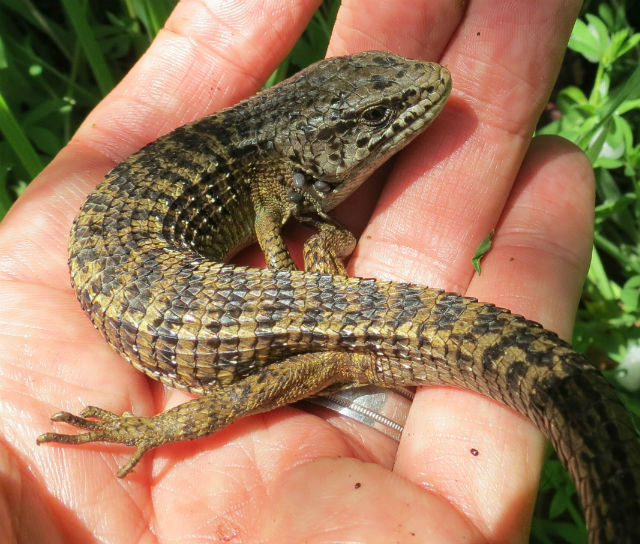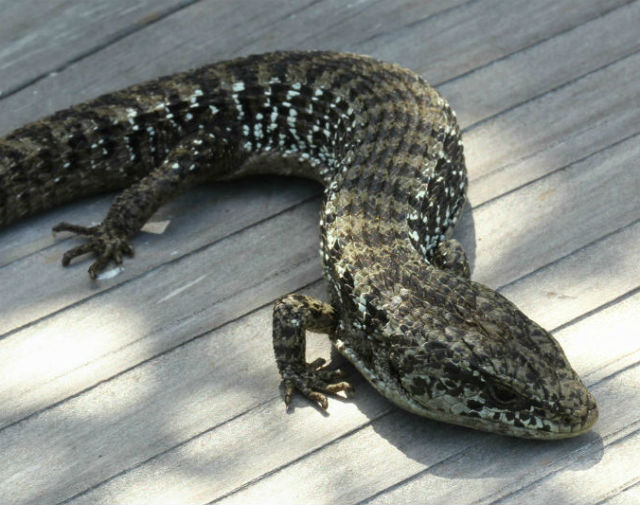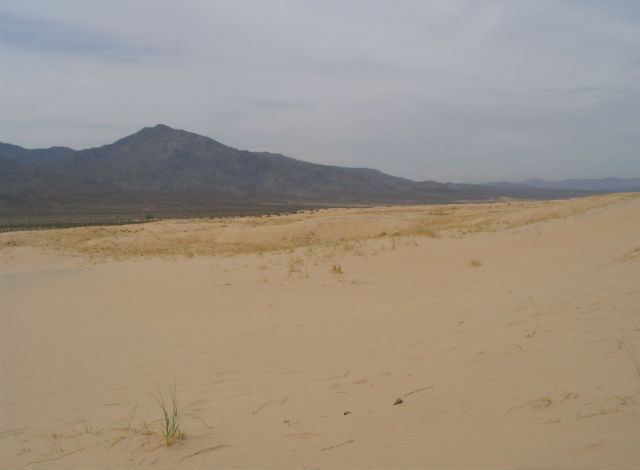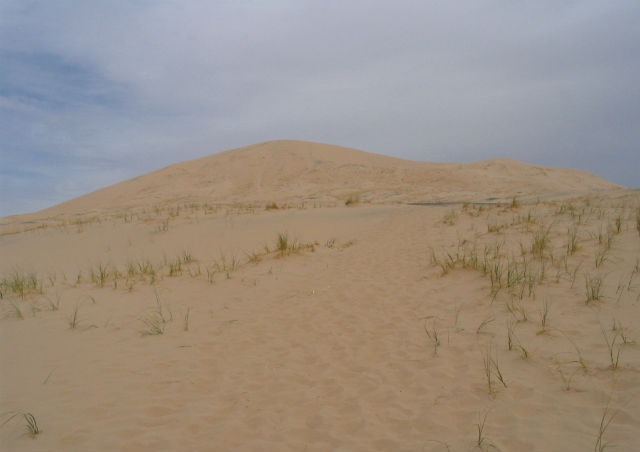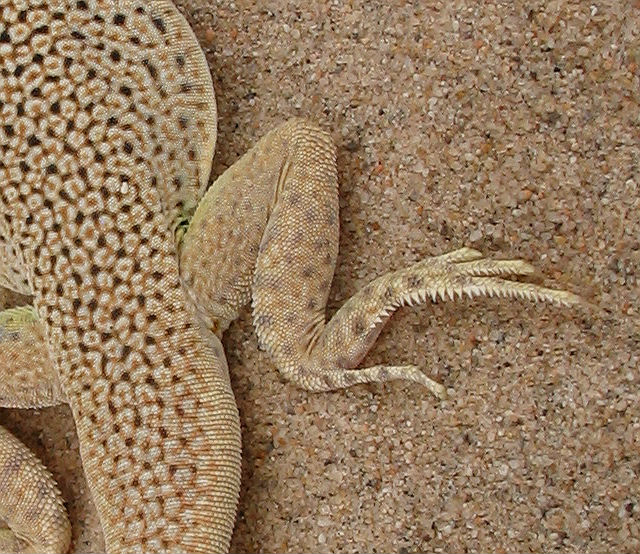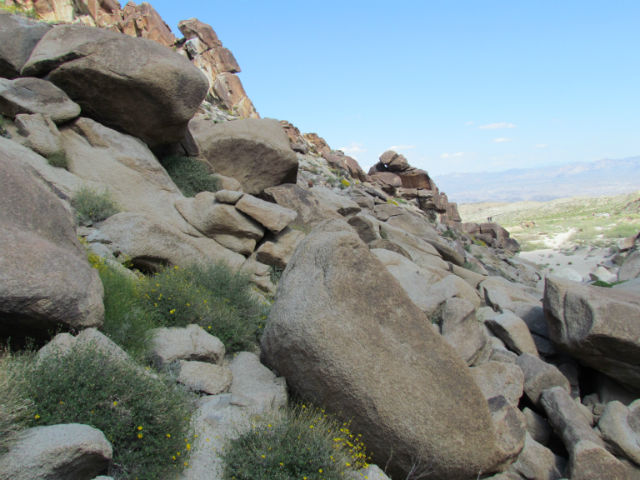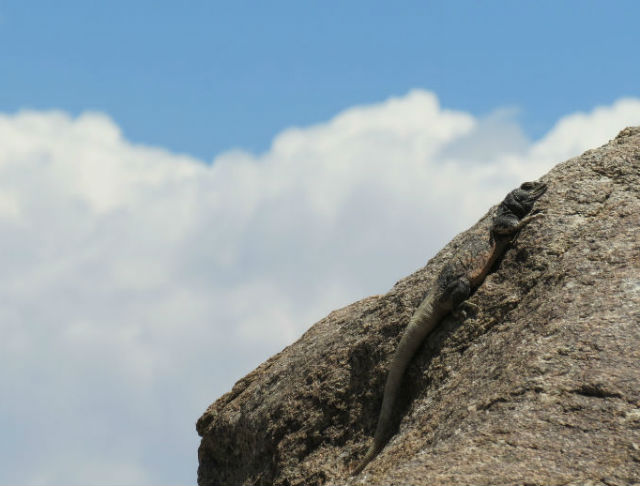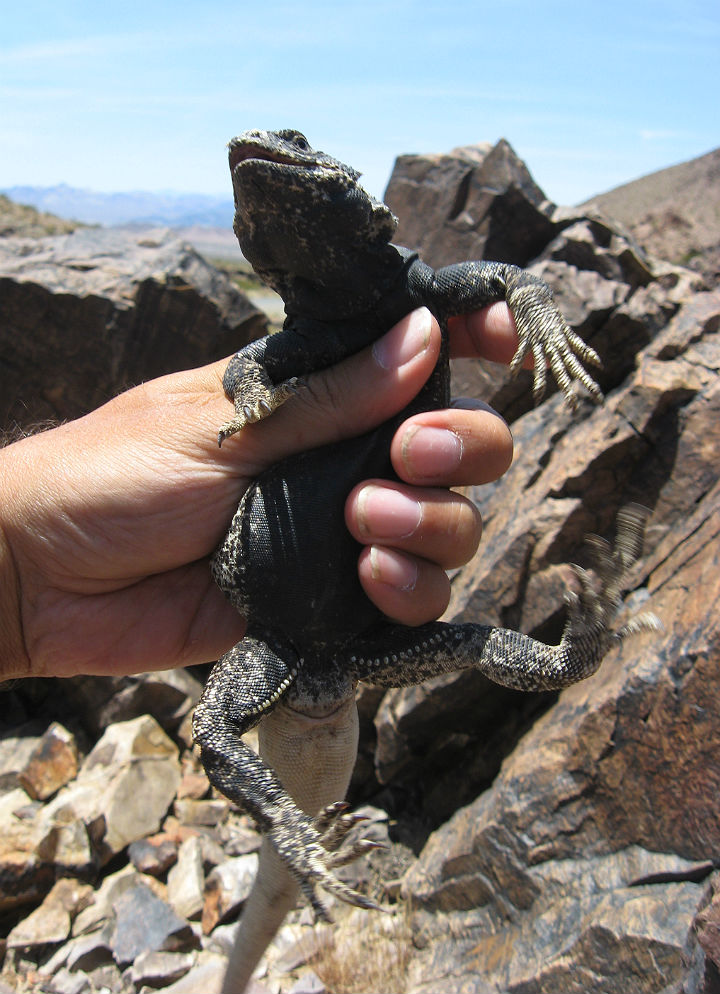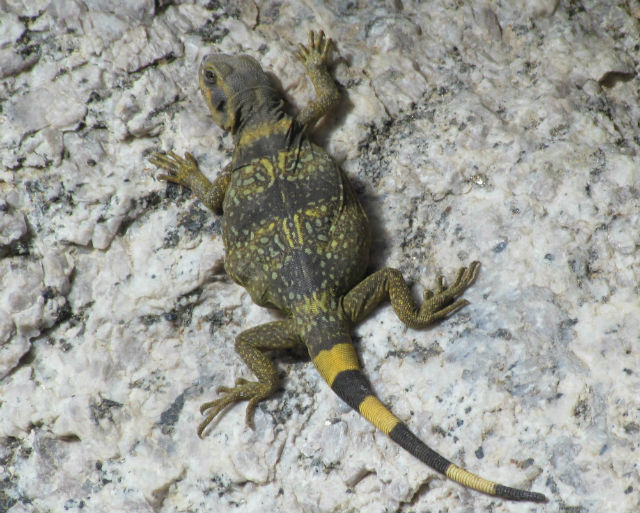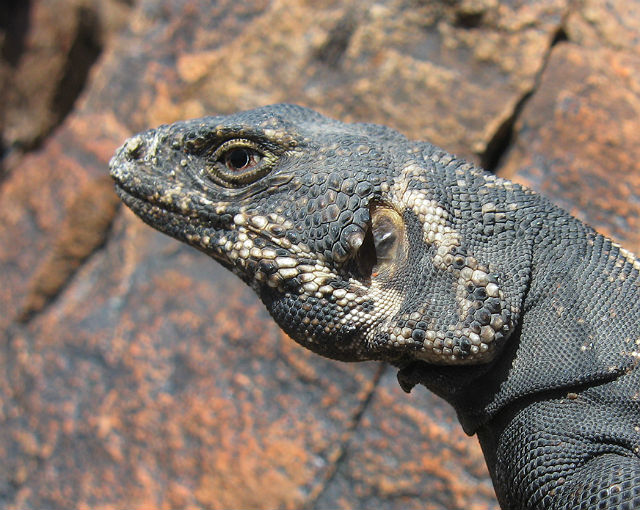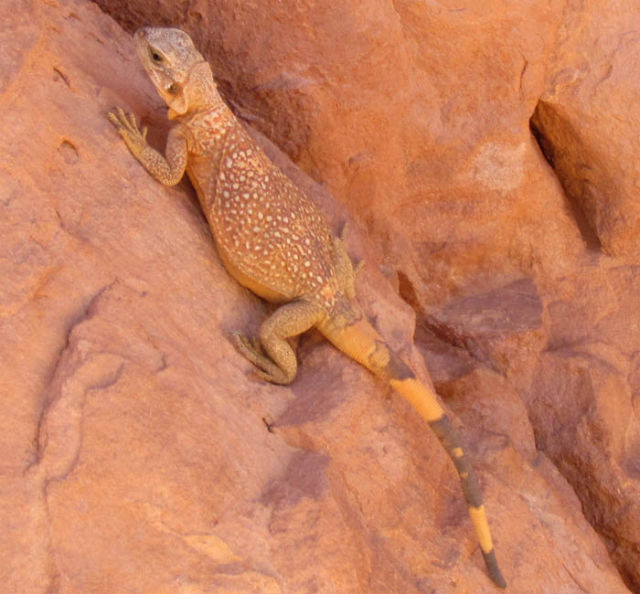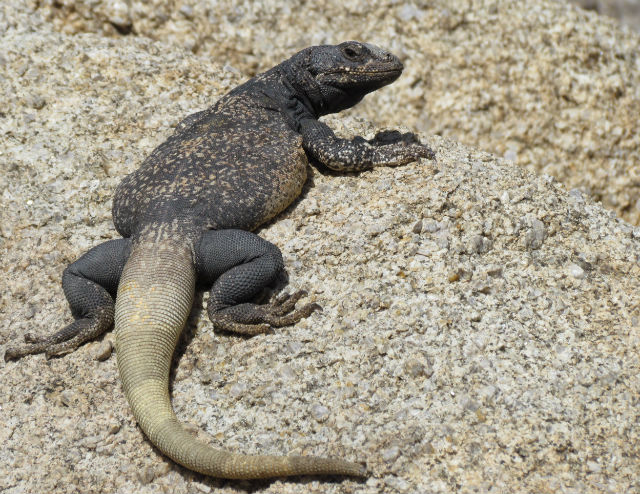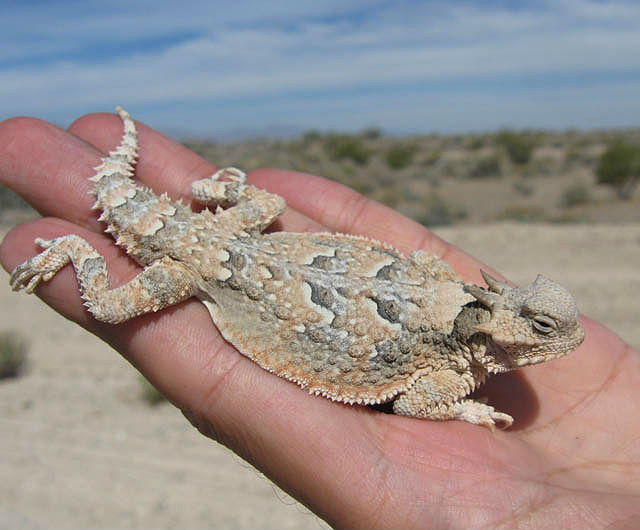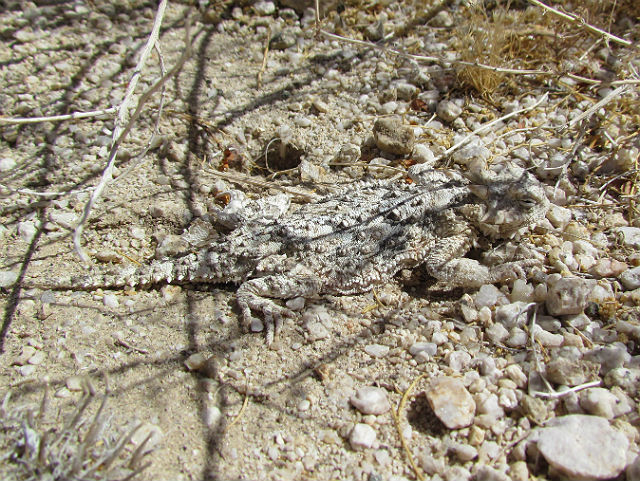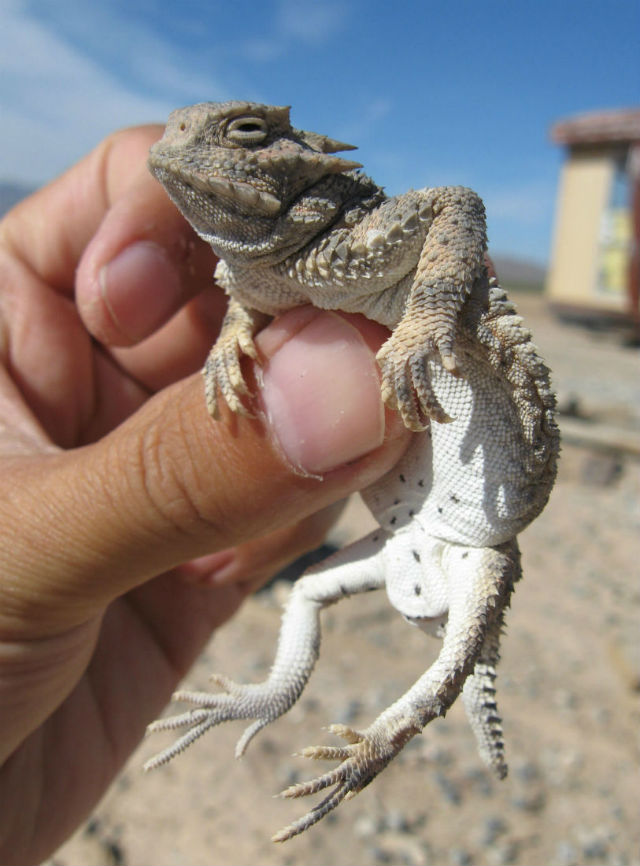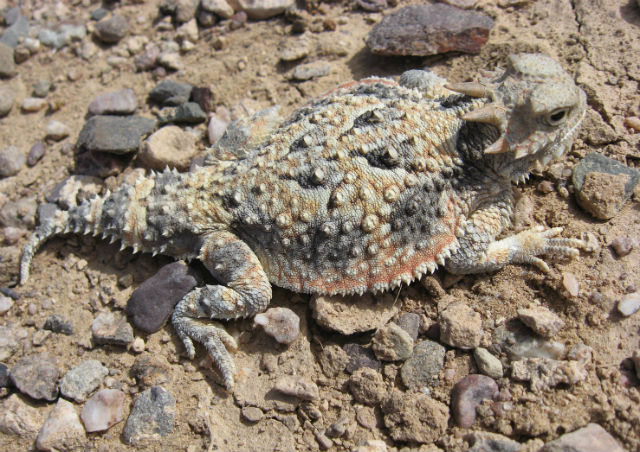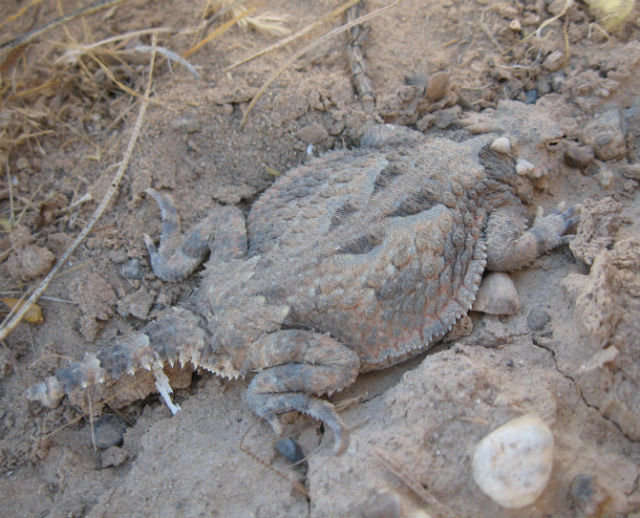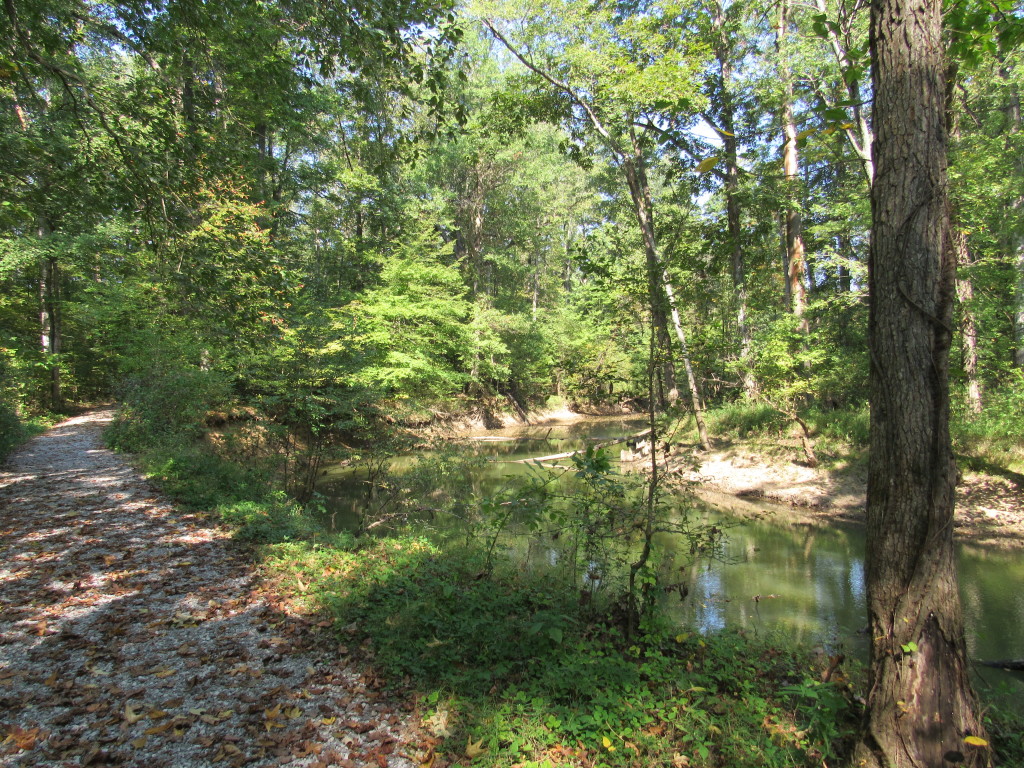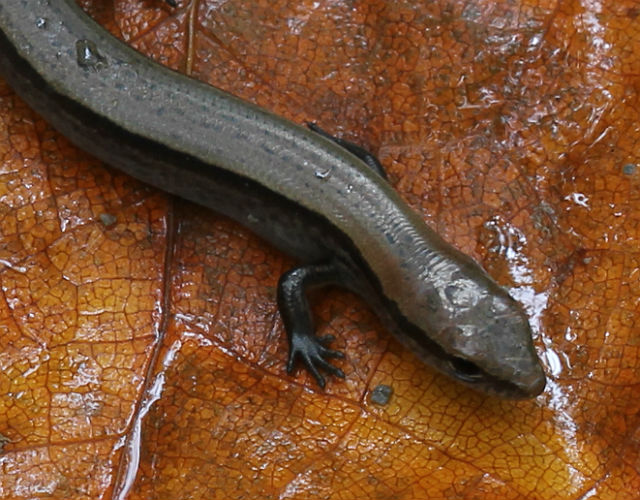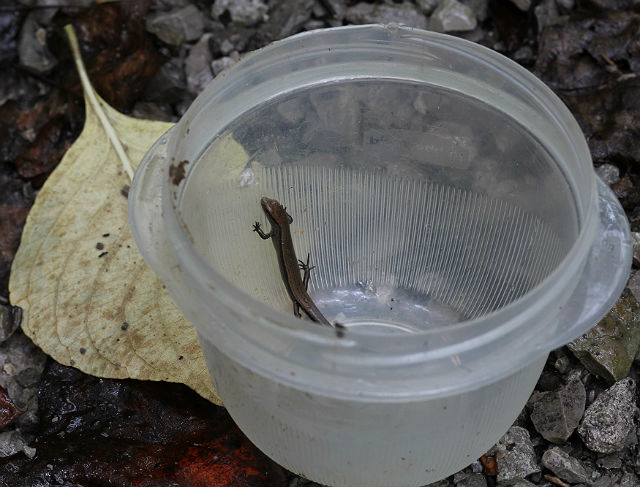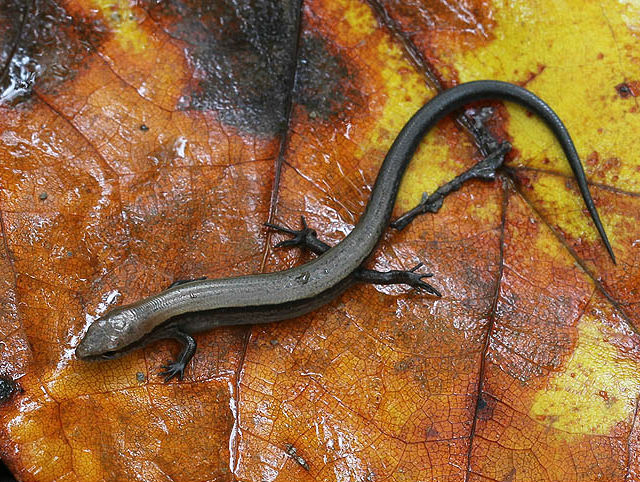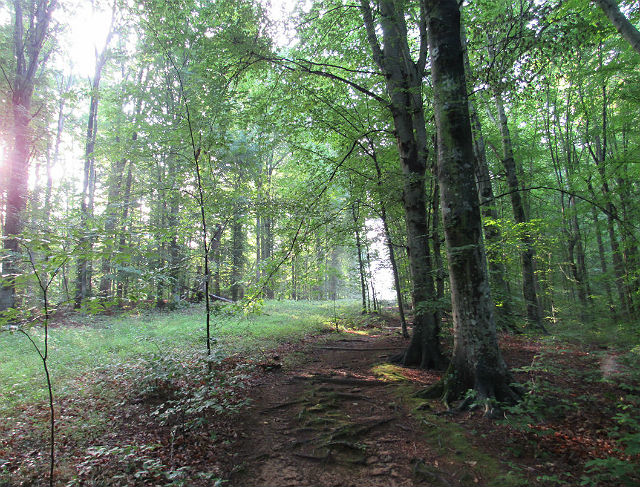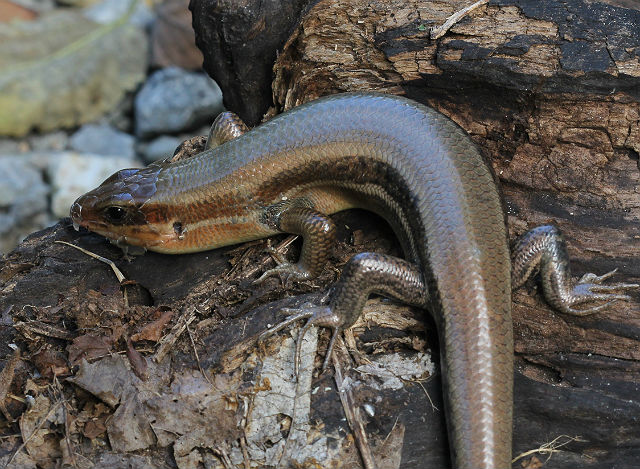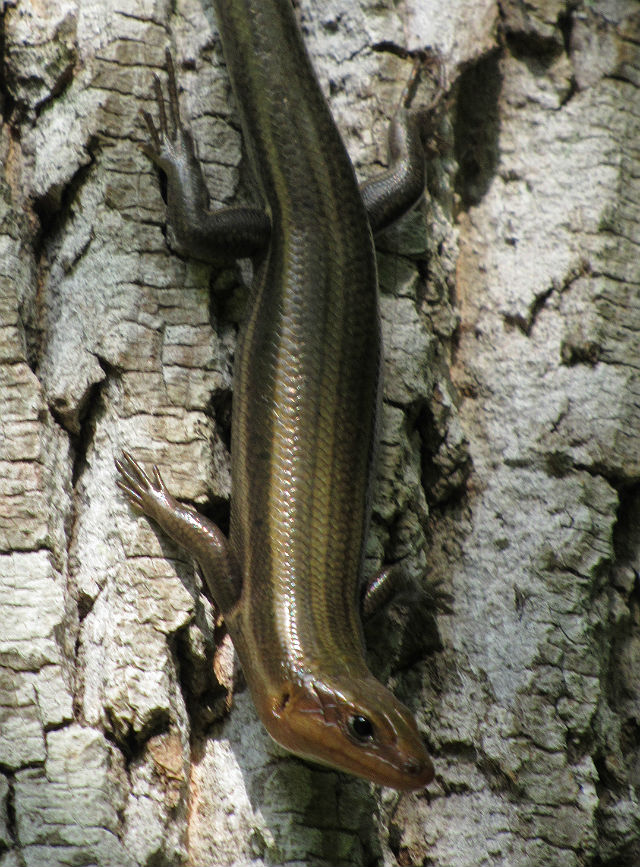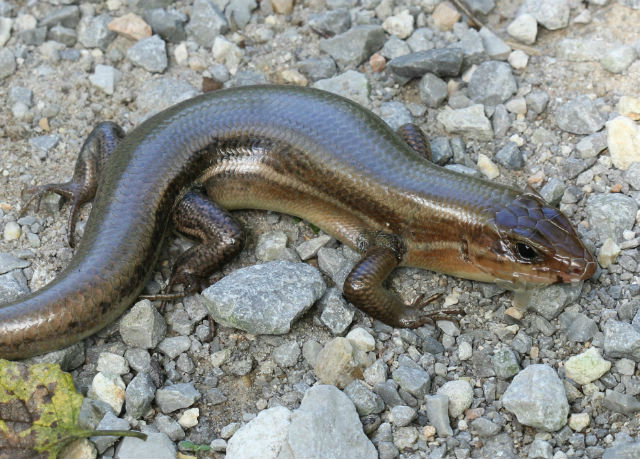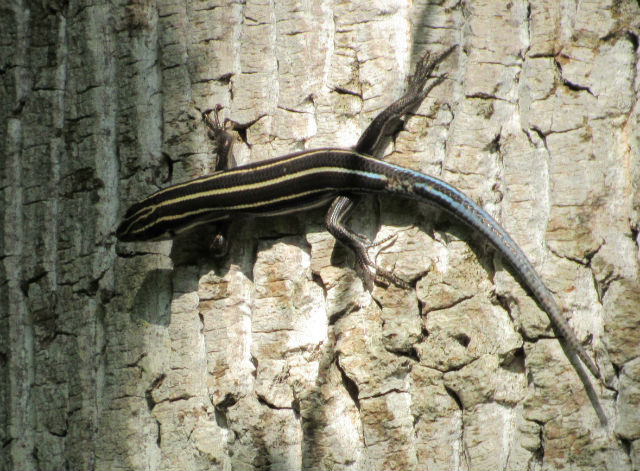This is a super cool reptile that I’ve occasionally seen on my visits to Nevada. It inhabits arid and semiarid areas with vegetation such as like bunch grass, sagebrush, creosote bush and other scattered low plants.
The Long-nosed Leopard Lizard prefers flat areas with open space for running and avoids densely vegetated habitats. Most of the times when I’ve encountered them, they were on dirt or gravel roads basking in the sunshine. They allowed me to take photos of them if I stayed in the car, but as soon as I got out, they ran for cover.
Like its namesake, it is characterized by dark spots. A color-changing reptile, the Long-nosed Leopard Lizard has a light coloration in which the spots are very visible, and a dark coloration in which the spots blend in. In addition, during breeding season, females develop orange spots.
This reptile is a fierce hunter that preys on mainly on smaller lizards, though it will also consume insects, rodents and snakes. This lizard supplements its diet with berries, small leaves and flowers. As an ambush predator, it waits in the shadows underneath a bush or small tree, where its spotted pattern blends in with its surroundings.
When a food item comes sufficiently close, it uses a rapid pouncing movement to capture the prey in its strong jaws.The Long-nosed Leopard Lizard has been documented to jump up to two feet in any direction, including into the air, in order to catch its food.
This reptile can reach more than 15 inches in total length and has the ability to stand up and run on its hind legs when being pursued by predators, such as kit foxes, badgers and birds.


